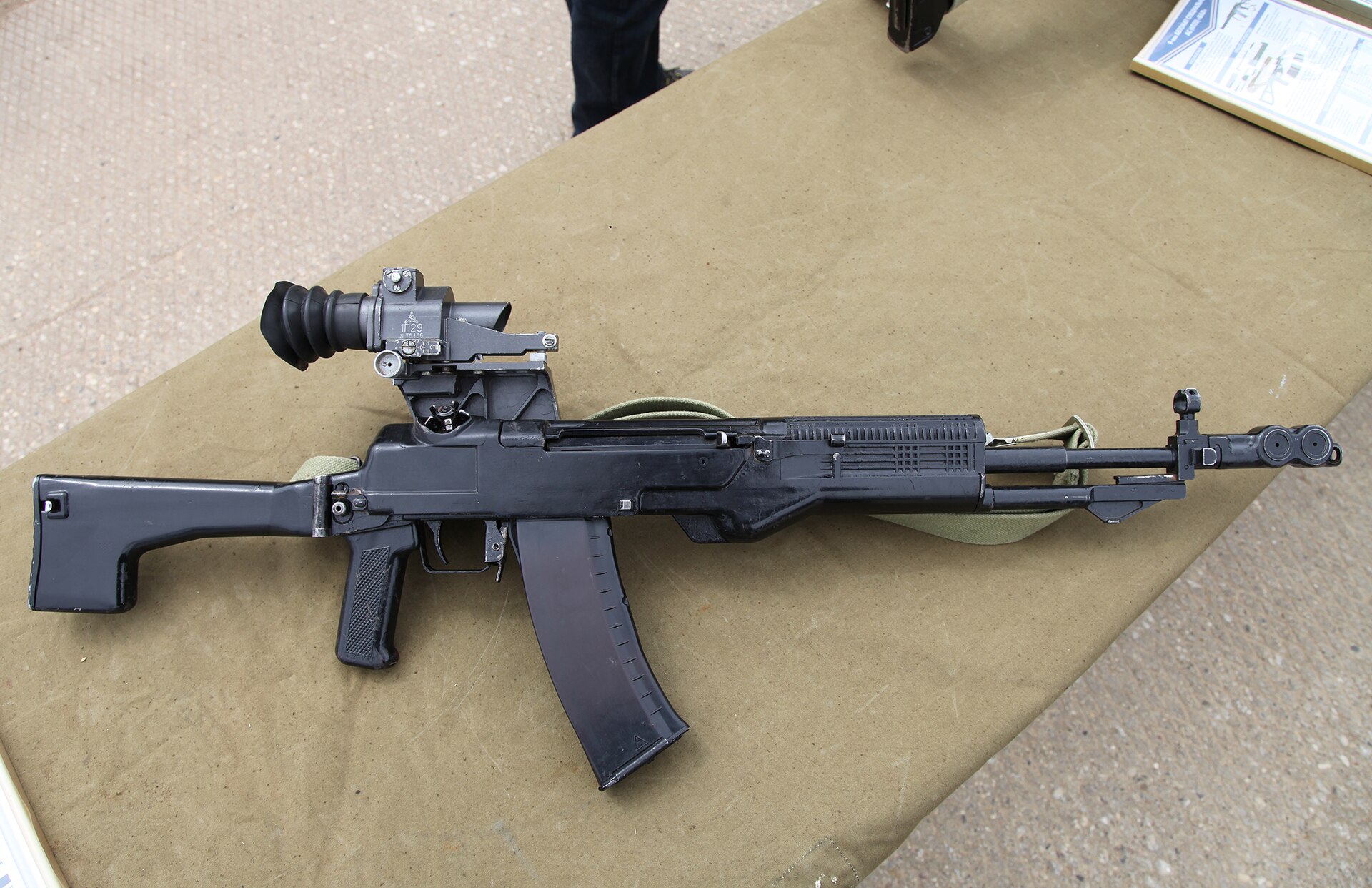Would the history of Eastern Europe and the Soviet Union have been different if Grigory Vasilyevech Romanov had been elected as Secretary General of the CPSU on March 11, 1985 rather than Mikhail Gorbachev? Thoughts?
You are using an out of date browser. It may not display this or other websites correctly.
You should upgrade or use an alternative browser.
You should upgrade or use an alternative browser.
Soviet Leader Grigory Romanov (1985-XXXX)
- Thread starter Triton
- Start date
- Joined
- 9 October 2009
- Messages
- 21,979
- Reaction score
- 13,647
Warsaw Pact would have remained intact in 1989.
The Soviet economy would likely be in much less of a mess in the late '80s /early '90s'.
The MAZ-2000 would have entered production, albeit without the Perestroyka name:

[IMAGE CREDIT: Commercial Motor/Biglorryblog]
Incidentally, the Veterok might have finally made it into production (it had been 'stuck in committee' since the 1960s!).

[IMAGE CREDIT: Dark Roasted Blend / TM, Russia]
The Soviet economy would likely be in much less of a mess in the late '80s /early '90s'.
The MAZ-2000 would have entered production, albeit without the Perestroyka name:

[IMAGE CREDIT: Commercial Motor/Biglorryblog]
Incidentally, the Veterok might have finally made it into production (it had been 'stuck in committee' since the 1960s!).

[IMAGE CREDIT: Dark Roasted Blend / TM, Russia]
- Joined
- 9 October 2009
- Messages
- 21,979
- Reaction score
- 13,647
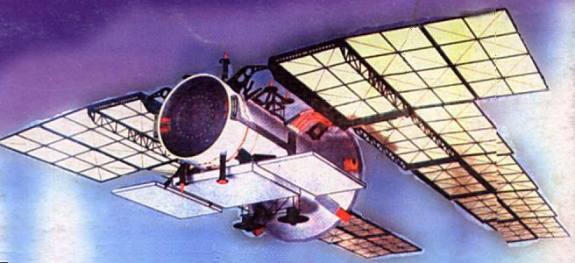
Obzor (Civilian non-nuclear spin-off of the Pirs system)
The continuation of development of the Pirs second generation RORSAT system would have been another likely outcome of such a timeline.
http://www.astronautix.com/craft/pirs2.htm
- Joined
- 9 October 2009
- Messages
- 21,979
- Reaction score
- 13,647
The 'Super Soyuz', the (original) Zarya:

http://www.astronautix.com/craft/zarya.htm
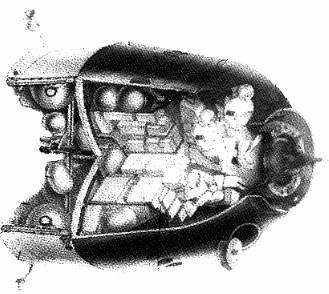
http://www.astronautix.com/craft/zarya.htm
- Joined
- 9 October 2009
- Messages
- 21,979
- Reaction score
- 13,647
- Joined
- 9 October 2009
- Messages
- 21,979
- Reaction score
- 13,647
Avimimus
ACCESS: Top Secret
- Joined
- 15 December 2007
- Messages
- 2,429
- Reaction score
- 911
By the 1990s electronic record keeping and rapid communication could make a centralised economy many times more effective. Think of the Soviet economy like Walmart or Amazon - able to drive down supplier prices, knowing every item which is purchased almost instantly, and effectively a monopoly...
While not perfect, many of the historic failings of centralised economies would be offset by the new technology (which is producing effective monopolies among distributors in capitalist economies)... so if there were any delays or reversals in economic reforms...
While not perfect, many of the historic failings of centralised economies would be offset by the new technology (which is producing effective monopolies among distributors in capitalist economies)... so if there were any delays or reversals in economic reforms...
- Joined
- 9 October 2009
- Messages
- 21,979
- Reaction score
- 13,647
Avimimus said:By the 1990s electronic record keeping and rapid communication could make a centralised economy many times more effective. Think of the Soviet economy like Walmart or Amazon - able to drive down supplier prices, knowing every item which is purchased almost instantly, and effectively a monopoly...
While not perfect, many of the historic failings of centralised economies would be offset by the new technology (which is producing effective monopolies among distributors in capitalist economies)... so if there were any delays or reversals in economic reforms...
Indeed, the Soviet Union, and to a somewhat lesser extent, the Eastern Block in general, did had some very good programmers, who were ingenious at creating programs to get the most out of the limited hardware that was generally available. And even there the Soviet Union was catching up to, or even overtaking the West in some areas, e.g. CPU architecture (I have an document or two on Soviet computer hardware I really must dig up and post one of these days).
And in light of announcements like the below, it's interesting to speculate what a still extant East Germany would have come up with by 2014, technology wise:
http://www.youtube.com/watch?feature=player_embedded&v=eZ05z6ebKDQ
http://spectrum.ieee.org/automaton/robotics/medical-robots/robotic-microscallops-can-swim-through-your-eyeballs
By the way, anyone else think of the Ghost In The Shell:SAC Interceptors when they heard about this?
- Joined
- 9 October 2009
- Messages
- 21,979
- Reaction score
- 13,647
Given the day that's in it, I should mention the 4th Generation Inner German Border system that was planned by East Germany for the 1990s (originally planned for the late '80s but postponed because of funding issues) to replace the 3rd Generation system [The Modern Frontier] that had been installed from the late 1960s onward.
This planned system was called Grenze 2000, and was to primarily consist of a network of signal tripwires, seismic detectors, infrared beams, 'smart' acoustic sensors, microwave radar and other electronic sensors, based in part on technology used by the Red Army in Afghanistan. It was also likely to eventually incorporate more advanced 'Selbstschussanlage' (automated sentry guns and the like).
All this was intended to replace most of the physical fences and barriers (including the infamous SM-70) used by the existing system, which were considered both increasingly expensive to maintain as well as bad PR. Of course, thanks in large part to Gorbachev, East Germany didn't survive long enough to implement Grenze 2000. However in our alternate timeline, East Germany would be replacing or upgrading Grenze 2000 around now.
This planned system was called Grenze 2000, and was to primarily consist of a network of signal tripwires, seismic detectors, infrared beams, 'smart' acoustic sensors, microwave radar and other electronic sensors, based in part on technology used by the Red Army in Afghanistan. It was also likely to eventually incorporate more advanced 'Selbstschussanlage' (automated sentry guns and the like).
All this was intended to replace most of the physical fences and barriers (including the infamous SM-70) used by the existing system, which were considered both increasingly expensive to maintain as well as bad PR. Of course, thanks in large part to Gorbachev, East Germany didn't survive long enough to implement Grenze 2000. However in our alternate timeline, East Germany would be replacing or upgrading Grenze 2000 around now.
- Joined
- 9 October 2009
- Messages
- 21,979
- Reaction score
- 13,647
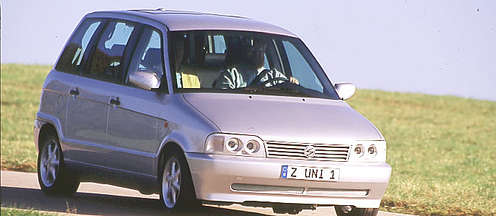
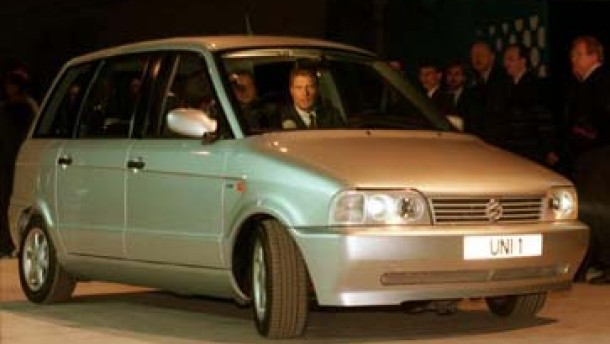
What a Trabant replacement might have looked like, circa 1996. A promising hybrid design the Sachsenring UNI 1, produced by the successor company to VEB Sachsenring, HQM Sachsenring GmbH. Unfortunately the big players in the reunified Germany, in particular Volkswagen didn't want competition as well as the fact that the 'Hybrid era' was a decade or so in the future, so that was that.
Image credits to the Trabant-Szene-Fürth website, and the Frankfurter Allgemeine newspaper.
Possibly relevant:
When Boris Yeltsin went grocery shopping in Clear Lake
He looked especially excited about frozen pudding pops.
When Boris Yeltsin went grocery shopping in Clear Lake
It was September 16, 1989 and Yeltsin, then newly elected to the new Soviet parliament and the Supreme Soviet, had just visited Johnson Space Center.
At JSC, Yeltsin visited mission control and a mock-up of a space station. According to Houston Chronicle reporter Stefanie Asin, it wasn’t all the screens, dials, and wonder at NASA that blew up his skirt, it was the unscheduled trip inside a nearby Randall’s location.
Yeltsin, then 58, “roamed the aisles of Randall’s nodding his head in amazement,” wrote Asin. He told his fellow Russians in his entourage that if their people, who often must wait in line for most goods, saw the conditions of U.S. supermarkets, “there would be a revolution.”
He looked especially excited about frozen pudding pops.
- Joined
- 9 October 2009
- Messages
- 21,979
- Reaction score
- 13,647
;D
But that does raise the issue of what would have happened to Yeltsin under a Romanov premiership. Would he have ended up in what the Japanese refer to as a 'window seat' serving (or more likely drinking) out the rest of his days in an effectively powerless position somewhere far from both the Central Committee and his old powerbase of Sverdlovsk Oblast? Or, end up dying of bootleg liquor in some Siberian gulag?
But that does raise the issue of what would have happened to Yeltsin under a Romanov premiership. Would he have ended up in what the Japanese refer to as a 'window seat' serving (or more likely drinking) out the rest of his days in an effectively powerless position somewhere far from both the Central Committee and his old powerbase of Sverdlovsk Oblast? Or, end up dying of bootleg liquor in some Siberian gulag?
- Joined
- 9 October 2009
- Messages
- 21,979
- Reaction score
- 13,647
NERVA said:http://www.independent.co.uk/news/obituaries/grigory-romanov-gorbachevs-chief-rival-for-power-842814.html
"By the time we arrived in Moscow, the very next day," Romanov claimed years later, "he [Gorbachev] had already done it, without waiting for us as Politburo rules demanded. That fast! He'd already cut the deal in secret with all of them". The circumstances were more than suspicious. "Do you think," Romanov wondered aloud, "that the timing of Chernenko's death was all accidental?"
Given that the then head of the KGB, a certain Viktor Chebrikov, was one of Gorbachev's supporters in his bid for the top job, a less than natural cause for Chernenko's passing is quite likely. In the old days, the Kremlin watchers would determine how a Soviet leadership contest was going in part by the demise of those unfortunates who suffered sudden deaths by mysterious illnesses or in 'accidents' and the like (helicopter crashes were particularly popular). Ironically, by the time that Chebrikov had realised the colossal blunder he had made in helping Gorbachev become General Secretary, the KGB had helped to dismantle the Romanov faction in it's usual efficient manner.
Staying with the Soviet Union, here's some more stuff we would have likely seen further developed in a Romanov premiership:
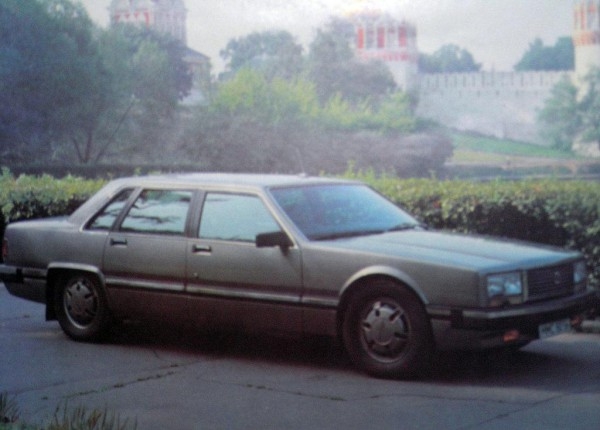
The intended replacement for the ZIL-41041 Limousine, the ZIL-4102. Apparently quite a few of it's components including the hood and front & rear bumpers were made out of Fiberglass reinforced plastic.
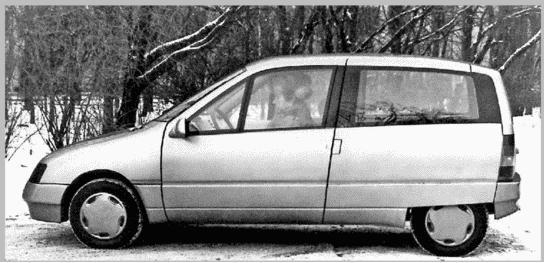
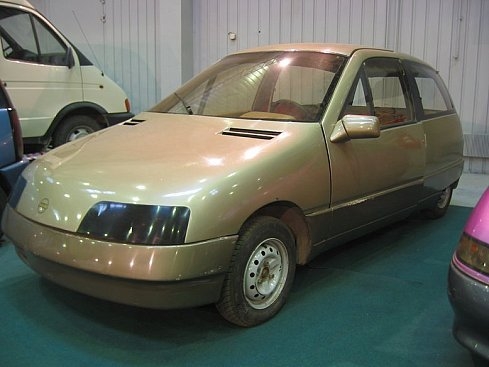
The NAMI-0284 concept car which was first revealed in 1987. Had among it's features a cruise control system. May have been intended for production by ZAZ. EDIT: Confirmed.
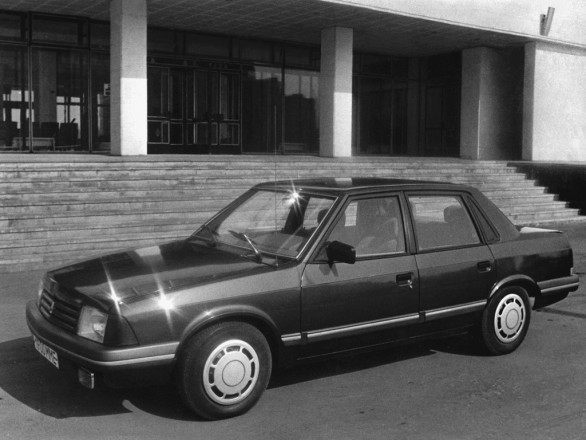
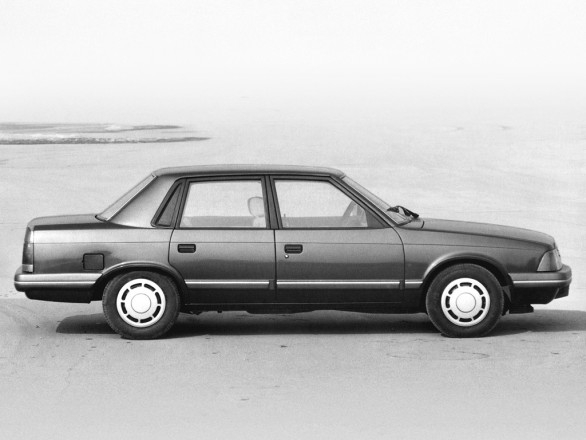
The Aleko (Moskvitch) AZLK-2142 sedan, based on the AZLK-2141. Unfortunately for Moskvitch, it was unveiled in 1990.
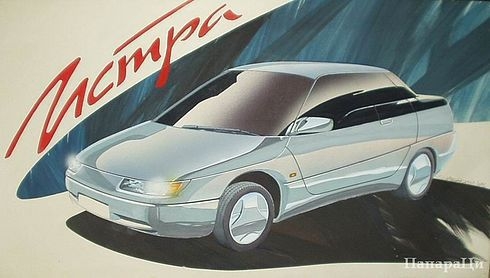
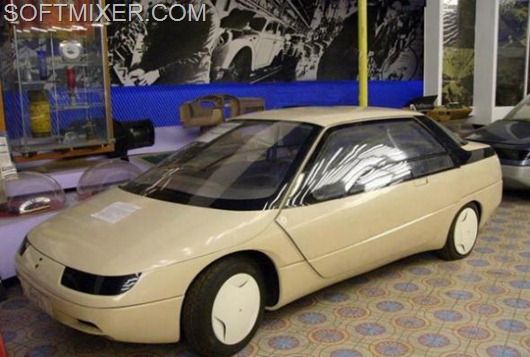
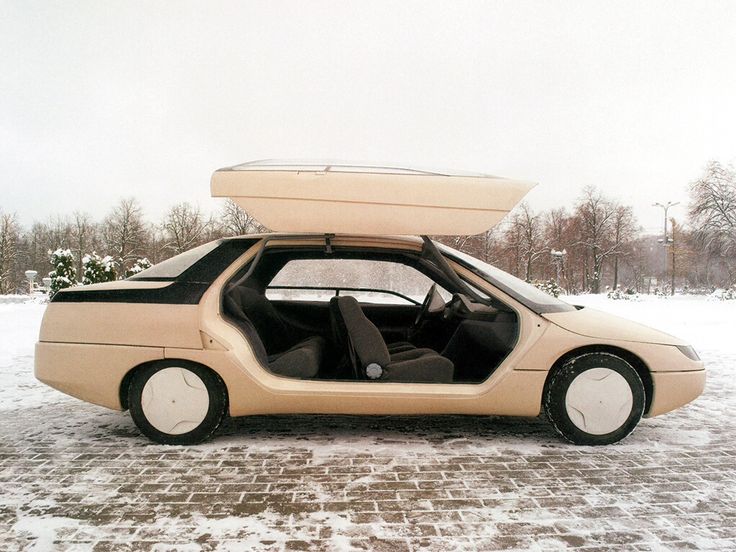
The AZLK-2144 'Istra'. Plans for mass production were foiled by the fall of the Soviet Union.
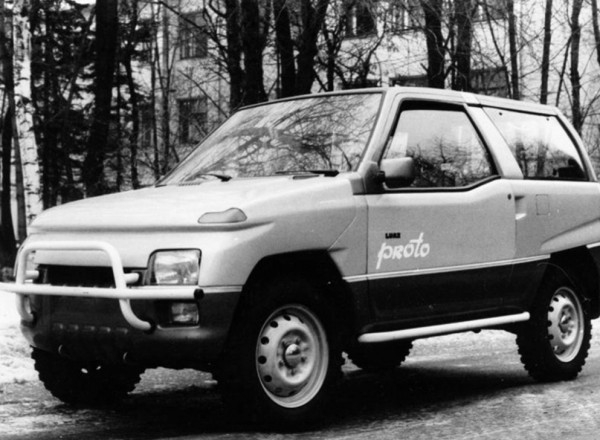
NAMI-LuAz ‘Proto’. Seemingly aimed primarily at the export market. Its four seats could convert to beds and it's normal roof could be swapped for one with a built in tent.
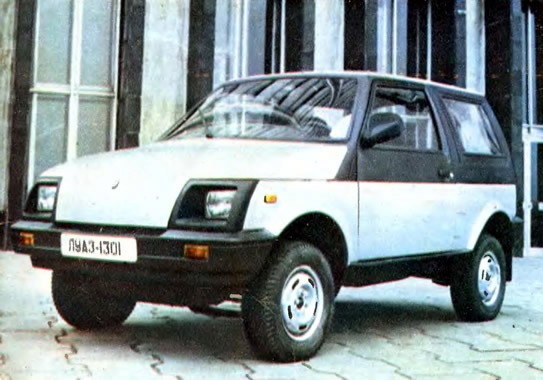
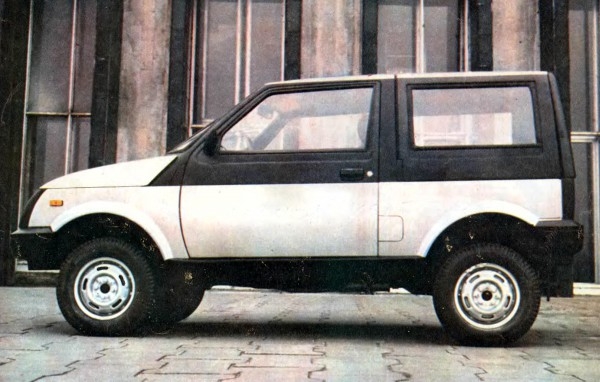
LuAZ-3101. Had a steel body incorporating plastic panels. Used the same engine (МеМZ-245) as the ZAZ ‘Tavria’. Fully adjustable clearance and AWD as standard. Had movable roof and sides allowing it be easily converted to a pickup and back again. Had a soft top option. For some reason production was not authorised (yet another victim of 'stuck in committee'?).
Source for the above images and some details (with the exception of the last two photos of the 'Istra'): http://englishrussia.com/2011/11/21/unusual-soviet-cars/
Source for the two exceptions Pinterest (first one courtesy of Karl Freier Mann, second one courtesy of GRAD [Gallery for Russian Arts and Design]).
A couple of other transport systems:
Our old friend the EKIP (h/t triton for the image).
And via the io9 blog, the Wagon TA-05 commuter maglev:
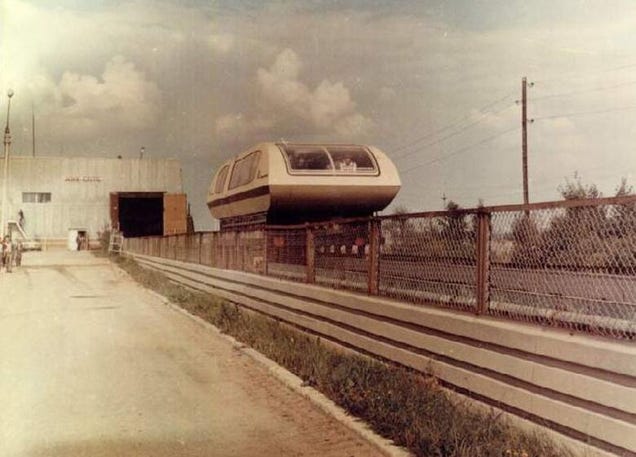
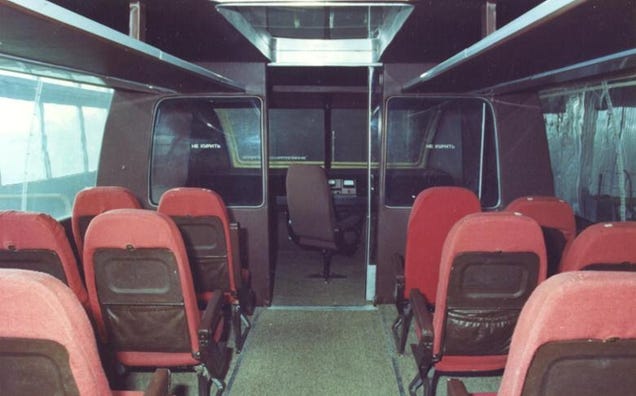
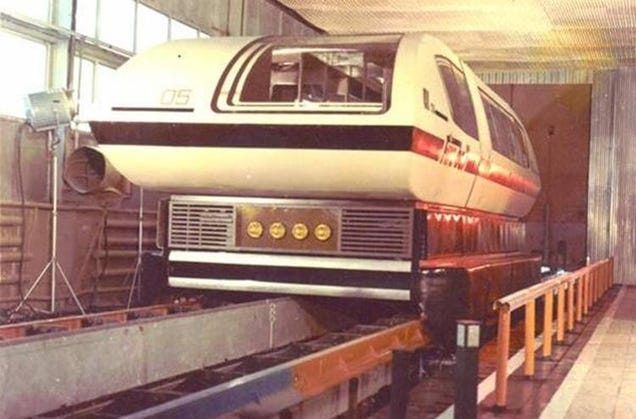
Intended as a much less expensive alternative to building or expanding subway systems for Soviet cities. Cruising speed of 250km/hr. Initial trials successful but only a small test track (600m) was built near Moscow before the fall of the Soviet Union.
royabulgaf
ACCESS: Top Secret
- Joined
- 29 December 2008
- Messages
- 678
- Reaction score
- 350
Nothing about my favorite, the Volga Sibr? Broadly, the idea was to import the tooling of the last generation midsize Chrysler. Russia would then have American styling and engineering at Russian prices. However, they were never able to wean themselves of imported parts, so they ended up with Russian fit and finish at American prices. BRILLIANT!
- Joined
- 9 October 2009
- Messages
- 21,979
- Reaction score
- 13,647
I doubt we would have seen anything like the Siber in the Romanov timeline. It was more of a 2000s echo of the ghost of Yeltsin and the 1990s in OTL.
- Joined
- 9 October 2009
- Messages
- 21,979
- Reaction score
- 13,647
The Soviet Navy would have likely been able to procure more Berezina class fleet replenishment ships in the 1980s with Romanov in office. Though the first of class had entered service in 1977, orders for further examples had been held up by bureaucratic wrangling and turf battles. Once Gorbachev got into power, the Navy's blue water capabilities and operations were increasingly cut back, so, no more dedicated replenishment ships were built.
Via Wikipedia, a 1988 photo of the Berezina:

Via Wikipedia, a 1988 photo of the Berezina:
- Joined
- 9 October 2009
- Messages
- 21,979
- Reaction score
- 13,647
- Joined
- 9 October 2009
- Messages
- 21,979
- Reaction score
- 13,647
I had forgotten about the Ilyushin Il-106 which would have likely shown up in some form or other:


(h/t Skyblazer and kaiserbill)
(h/t Skyblazer and kaiserbill)
- Joined
- 9 October 2009
- Messages
- 21,979
- Reaction score
- 13,647
Not only was he long poor both in health and finances by that time, but Russia's health services never really recovered from the catastrophe that was the 1990s. So there would be a reasonable chance he would be still alive as of the late 2000s in our alternate timeline, especially if he was still Secretary General.
On another note, here is the Antonov An-418:

On another note, here is the Antonov An-418:
- Joined
- 9 October 2009
- Messages
- 21,979
- Reaction score
- 13,647
A couple of more things we may have seen in the late 1990s:
A Sukhoi SST design derived from a T-4 configuration

A very interesting image Overscan! Really captivating Aeroflot's SST'S combination of a background to the style of the publicities of the decade of 1930 of the clippers of PanAm. Are not this way communism that tolerated!
Continuing here with the topic oar other image of:
Does need to move a town in a single trip? Design of a superekranoplane of A. N. Panchenkov: 4000 tons, twelve reactors ,124 meters
long and 50,5 of wide. Speed of cruise of 300 mph. (source: Popular Mechanical edition Argentinean September of 1992)

"A Sukhoi SST design derived from a T-4 configuratio"
Look like taking off from St-Martin. Sorry for the peoples on the beach...
Look like taking off from St-Martin. Sorry for the peoples on the beach...
- Joined
- 9 October 2009
- Messages
- 21,979
- Reaction score
- 13,647
Warsaw Pact would have remained intact in 1989.
The Soviet economy would likely be in much less of a mess in the late '80s /early '90s'.
The MAZ-2000 would have entered production, albeit without the Perestroyka name:

[IMAGE CREDIT: Commercial Motor/Biglorryblog]
Incidentally, the Veterok might have finally made it into production (it had been 'stuck in committee' since the 1960s!).

[IMAGE CREDIT: Dark Roasted Blend / TM, Russia]
I seriously do NOT concur on their economy being in better shape. In the early 80's I wrote a little paper, really boring comparative analysis to see if the USSR was making enough refrigerators to meet the needs of the Heroic Mother program.. they weren't, they were in fact horribly behind on providing the basics to people taking part in a program considered of the highest priority to the survival of the Soviet (read white slavic), State. In 1983 I figured they had about 15 years until total industrial collapse, simply to much of their industrial production was being used for defense.
Another hardliner pushes things to a roll of the dice in the Fulda gap.
- Joined
- 9 October 2009
- Messages
- 21,979
- Reaction score
- 13,647
While a lot of production capacity was indeed dedicated to military or internal security purposes, especially before Gorbachev rose to power, another reason for the shortfall in consumer goods production was the legacy of the Tenth Five-Year Plan. From the late 1960s to the mid-1970s there seems to have been modest but on-going improvements in the general availability of Group B products. However these gains ended up being all but wiped out by the Tenth Five-Year Plan when it was introduced in 1976 (drafting of the plan had begun back in 1974). The plan was primarily intended to concentrate resources on two potential problems that were perceived to be possible major obstacles or even outright dangers to the Soviet Union on it's march to establishing worldwide socialism (remember that the Soviets were by and large handily winning the Cold War at this point in time, so they thought they could turn some more of their attention to what had been previously relatively lower priority issues).
The first issue was concern that, despite leading in a number of scientific and technological areas, especially ones related to heavy industry, Brezhnev and the rest of the Soviet leadership were concerned that despite social, political & economical chaos in the West (a great deal of which was being orchestrated by the Soviets and their allies) it could still conceivably pull ahead in critically important areas of R&D, particularly in the United States, Great Britain, and West Germany, not to mention Japan. The fear was that this could not only end up reducing the USSR's military advantage over it's enemies but also weaken the country's economy (which was in a quite decent position at that time), potentially delaying Communism's then seemingly inevitable victory over Capitalism. Therefore, the new Five-Year Plan redoubled and tripled efforts to acquire foreign technology, by means both fair and foul.
The second issue, and the one that really put the cat among the pigeons with regards as to consumer goods development & production, was ironically enough something that was in the 1960s and 1970s and on into the 1980s a worldwide concern, namely available food supplies in the face of a projected ever increasing global population. Brezhnev's answer to this was to make agriculture the number one priority in the new plan, even more so than the push for foreign technologies (except where that neatly dovetailed with it in the form of technologies directly related to food production and/or processing). Even some previously sacrosanct defence and heavy industry priorities became secondary for a time to the desire to increase food production (with regards as to transportation priorities for example). While investment in chemical and petrochemical industry at least doubled compared to the Fourth Five-Year Plan, this was primarily in support of the renewed emphasis on agriculture. The rest of the Warsaw Pact nations of course had to adjust their own economies to accommodate the change in Soviet economic priorities. Also, there were increases in Soviet food imports from outside the Warsaw Pact, including ironically from the United States and Canada, which were intended as temporary stopgaps until domestic food production rose to meet the new targets. It should be noted that those imports had already not been inconsiderable due to a number of poor harvests during the 1970s, in particular those of 1972 and 1974. These poor harvests had helped influence the Soviet leadership in making agriculture the key priority in the new Five-Year Plan.
While well intentioned enough, this emphasis on increasing agriculture (and not just food related) would lead to a number of economic and environmental fiascos in the '70s and '80s through both unfortunate mishaps and plain old fashioned human avarice (the Aral Sea and Cotton production, anybody?). This was particularly ironic in light of the plan being officially referred to as "The Plan of Quality and Efficiency". In the shorter term it would be disastrous as far as consumer goods were concerned. With much of the resources that had previously been available for Group B development and production now diverted to the accelerated enlargement of the agricultural sector, the provision of such goods quickly began dropping below planned levels. In fact, two previous drafts of the new Five-Year Plan had been rejected by the Politburo because of worries that it gave far too little attention to the area of consumer goods. Those concerns proved well founded. By the early 1980s as bobtdwarf has noted, quality consumer goods were in very short supply in the USSR. On a related note, workforce productivity was steadily decreasing, with disillusionment with the overall Soviet system slowly but surely growing.
The Eleventh Five-Year plan would try to fix this and other shortcomings caused by the previous Five-Year plan (including, highly ironically, in agriculture) in part through attempting to increase the skilled portion of the Soviet workforce, particularly in the Central Asia region, and partly through shaking up various Enterprises (companies in other words, mostly state owned). By 1985, the provision of decent consumer goods was finally beginning to meet projections once again, despite things like major increases to the already large defence budget that had occurred under Andropov and continuing economic fallout from the agricultural bias of the previous five-year plan. Alas for the Soviet Union however, that was the year that Gorbachev would finally become General Secretary. Glasnost and Perestroika, along with the now totally unfettered Nomenklatura, would foul up things so badly that consumer goods of any quality (and increasingly even basic necessities) were all but impossible to be acquired by the average Soviet citizen, at least legally.
The first issue was concern that, despite leading in a number of scientific and technological areas, especially ones related to heavy industry, Brezhnev and the rest of the Soviet leadership were concerned that despite social, political & economical chaos in the West (a great deal of which was being orchestrated by the Soviets and their allies) it could still conceivably pull ahead in critically important areas of R&D, particularly in the United States, Great Britain, and West Germany, not to mention Japan. The fear was that this could not only end up reducing the USSR's military advantage over it's enemies but also weaken the country's economy (which was in a quite decent position at that time), potentially delaying Communism's then seemingly inevitable victory over Capitalism. Therefore, the new Five-Year Plan redoubled and tripled efforts to acquire foreign technology, by means both fair and foul.
The second issue, and the one that really put the cat among the pigeons with regards as to consumer goods development & production, was ironically enough something that was in the 1960s and 1970s and on into the 1980s a worldwide concern, namely available food supplies in the face of a projected ever increasing global population. Brezhnev's answer to this was to make agriculture the number one priority in the new plan, even more so than the push for foreign technologies (except where that neatly dovetailed with it in the form of technologies directly related to food production and/or processing). Even some previously sacrosanct defence and heavy industry priorities became secondary for a time to the desire to increase food production (with regards as to transportation priorities for example). While investment in chemical and petrochemical industry at least doubled compared to the Fourth Five-Year Plan, this was primarily in support of the renewed emphasis on agriculture. The rest of the Warsaw Pact nations of course had to adjust their own economies to accommodate the change in Soviet economic priorities. Also, there were increases in Soviet food imports from outside the Warsaw Pact, including ironically from the United States and Canada, which were intended as temporary stopgaps until domestic food production rose to meet the new targets. It should be noted that those imports had already not been inconsiderable due to a number of poor harvests during the 1970s, in particular those of 1972 and 1974. These poor harvests had helped influence the Soviet leadership in making agriculture the key priority in the new Five-Year Plan.
While well intentioned enough, this emphasis on increasing agriculture (and not just food related) would lead to a number of economic and environmental fiascos in the '70s and '80s through both unfortunate mishaps and plain old fashioned human avarice (the Aral Sea and Cotton production, anybody?). This was particularly ironic in light of the plan being officially referred to as "The Plan of Quality and Efficiency". In the shorter term it would be disastrous as far as consumer goods were concerned. With much of the resources that had previously been available for Group B development and production now diverted to the accelerated enlargement of the agricultural sector, the provision of such goods quickly began dropping below planned levels. In fact, two previous drafts of the new Five-Year Plan had been rejected by the Politburo because of worries that it gave far too little attention to the area of consumer goods. Those concerns proved well founded. By the early 1980s as bobtdwarf has noted, quality consumer goods were in very short supply in the USSR. On a related note, workforce productivity was steadily decreasing, with disillusionment with the overall Soviet system slowly but surely growing.
The Eleventh Five-Year plan would try to fix this and other shortcomings caused by the previous Five-Year plan (including, highly ironically, in agriculture) in part through attempting to increase the skilled portion of the Soviet workforce, particularly in the Central Asia region, and partly through shaking up various Enterprises (companies in other words, mostly state owned). By 1985, the provision of decent consumer goods was finally beginning to meet projections once again, despite things like major increases to the already large defence budget that had occurred under Andropov and continuing economic fallout from the agricultural bias of the previous five-year plan. Alas for the Soviet Union however, that was the year that Gorbachev would finally become General Secretary. Glasnost and Perestroika, along with the now totally unfettered Nomenklatura, would foul up things so badly that consumer goods of any quality (and increasingly even basic necessities) were all but impossible to be acquired by the average Soviet citizen, at least legally.
Last edited:
- Joined
- 9 October 2009
- Messages
- 21,979
- Reaction score
- 13,647
- Joined
- 27 September 2006
- Messages
- 6,418
- Reaction score
- 6,827
I like this thread as a vehicle for publishing unbuilt East Block stuff from the late 80s.
The Soviet Union was not in a position to offer the East Bloc a version of the modern Chinese deal: prosperity in return for passivity. The US and West Germany in particular were able to have sophisticated military industrial complexes which also ( not instead ) delivered high value consumer goods. Trying to keep up with that was making the Soviet Union poorer.
The Soviet Union was not in a position to offer the East Bloc a version of the modern Chinese deal: prosperity in return for passivity. The US and West Germany in particular were able to have sophisticated military industrial complexes which also ( not instead ) delivered high value consumer goods. Trying to keep up with that was making the Soviet Union poorer.
- Joined
- 9 October 2009
- Messages
- 21,979
- Reaction score
- 13,647
In this timeline there would likely be more SES vessels around on both sides of the Iron Curtain, including a lot more Sivuch-class missile corvettes (NATO codename Dergach).
- Joined
- 9 October 2009
- Messages
- 21,979
- Reaction score
- 13,647
To a degree.
- Joined
- 9 October 2009
- Messages
- 21,979
- Reaction score
- 13,647
Last edited:
- Joined
- 22 January 2006
- Messages
- 4,216
- Reaction score
- 2,018
The Tu-142 Maritime Patrol Aircraft
That's An-171 MPA proposal to replace Tu-142
- Joined
- 9 October 2009
- Messages
- 21,979
- Reaction score
- 13,647
Woops, must have been half asleep there. Fixed, thanks!
- Joined
- 9 October 2009
- Messages
- 21,979
- Reaction score
- 13,647
- Joined
- 9 October 2009
- Messages
- 21,979
- Reaction score
- 13,647
- Joined
- 9 October 2009
- Messages
- 21,979
- Reaction score
- 13,647
Thinking further on the matter, in the Romanov timeline, the An-93 might have possibly ended up being based on the TKB-0146 prototype instead:

Image source
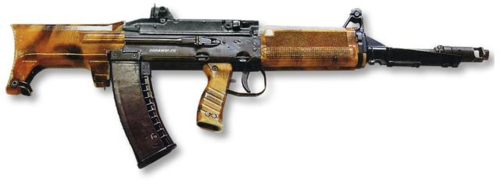
Image source
when i read the name i toughed first about this Romanov, had to Google the name but still i do not think the Soviet Union could have gone longer, it would still crash, either softly as OTL ore hard with somebody who will use whatever means to keep the Union together.Would the history of Eastern Europe and the Soviet Union have been different if Grigory Vasilyevech Romanov had been elected as Secretary General of the CPSU on March 11, 1985 rather than Mikhail Gorbachev? Thoughts?
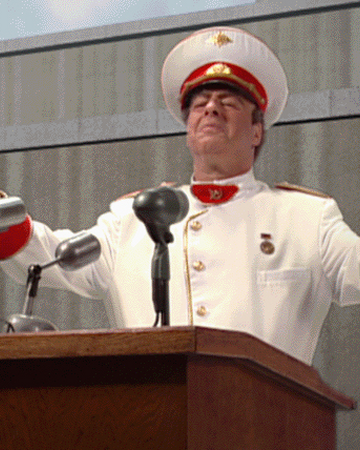
- Joined
- 9 October 2009
- Messages
- 21,979
- Reaction score
- 13,647
Similar threads
-
Extended Cold War Naval Development
- Started by that_person
- Replies: 13
-
Glasnost/Perestroika in 1968 instead of 1989
- Started by uk 75
- Replies: 25
-
Eurocommunism in the 1970s and the USA
- Started by uk 75
- Replies: 2
-
OGAS - a planned Soviet national computer network
- Started by Grey Havoc
- Replies: 9
-
2001: A Space-Time Odyssey
- Started by Michel Van
- Replies: 144

